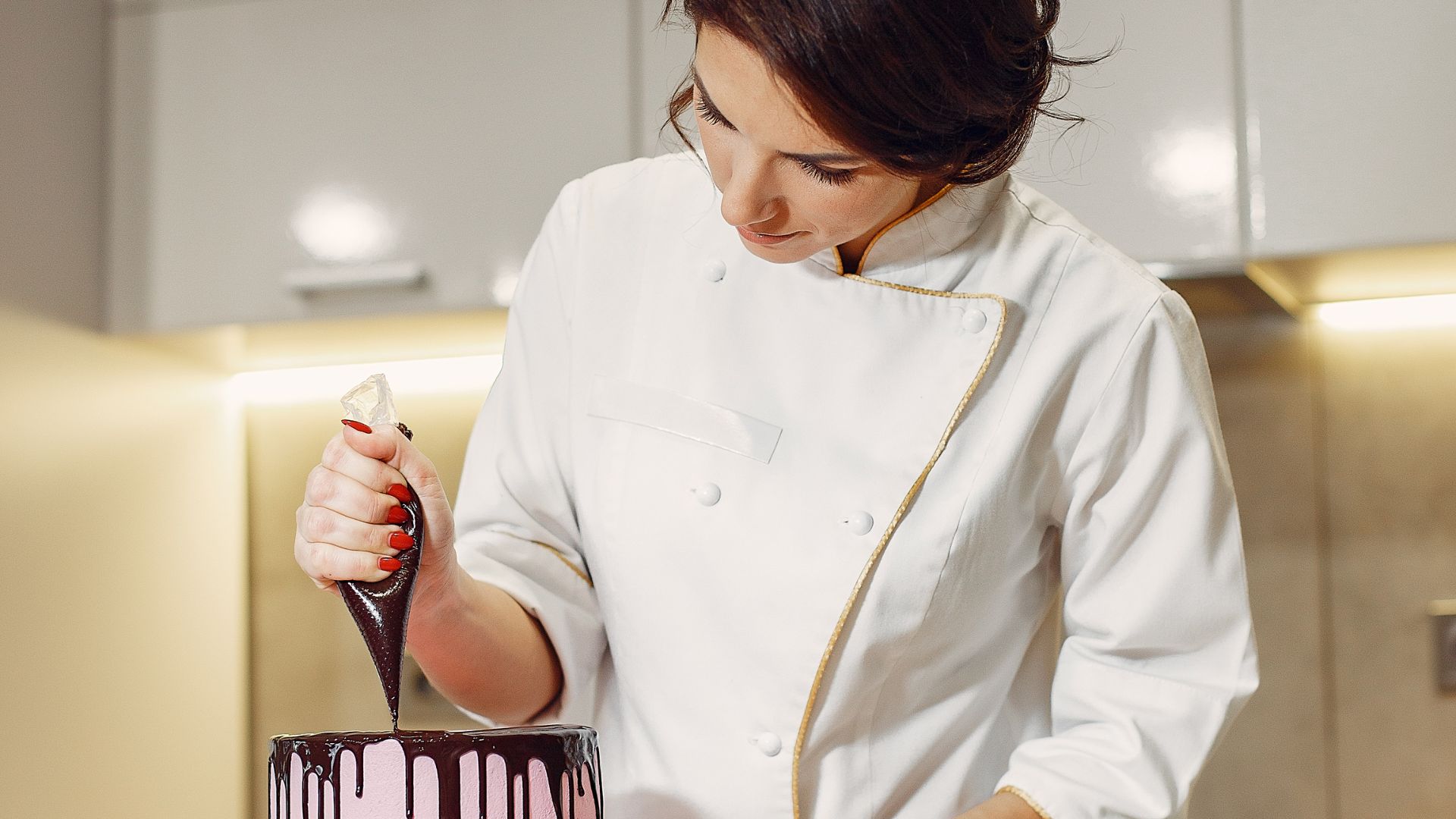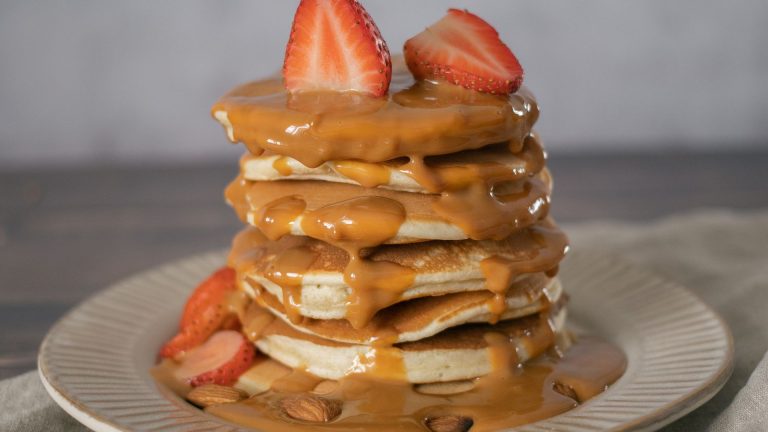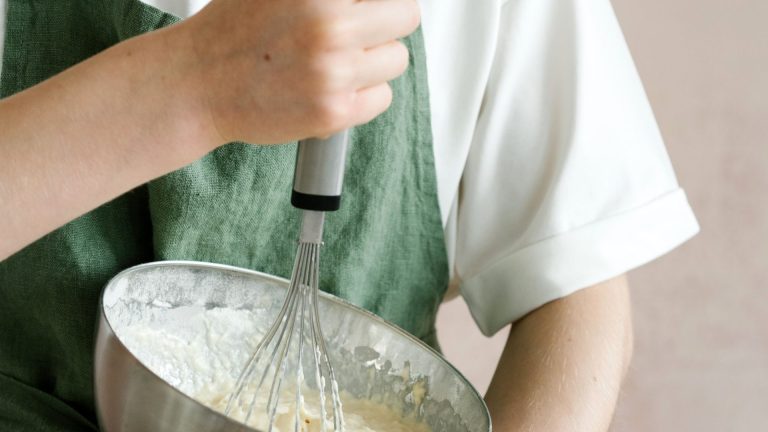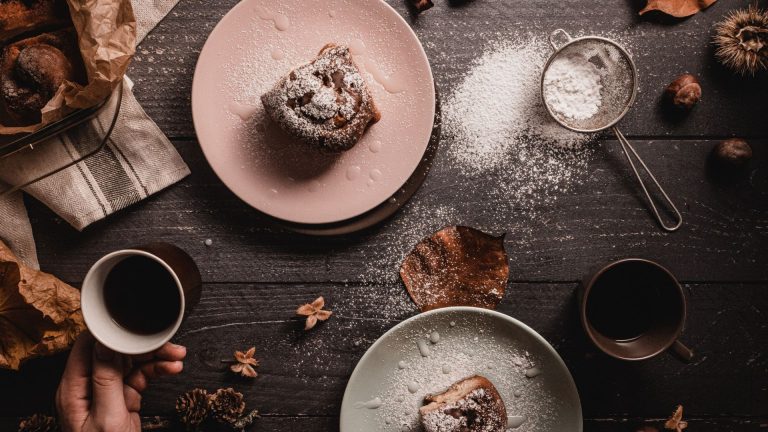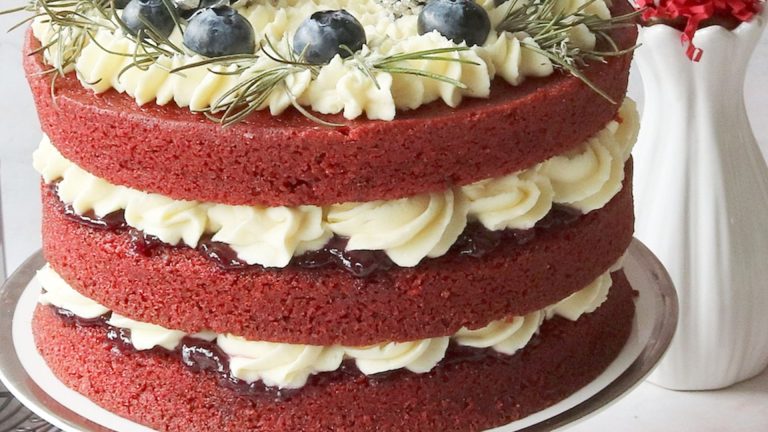LVR: Leavening role in cake making Explained
Table of Contents
ToggleWhat is Leavening?
Leavening refers to the process of incorporating gas bubbles into dough or batter, which causes it to expand and rise. This gas, often carbon dioxide, creates a lighter texture in baked goods. There are three main types of leavening agents used in cake making:== >> Check out the right cake Leavening tools and ingredients that you need here
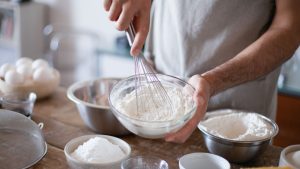
Chemical Leaveners: These include baking powder and baking soda. They work by releasing carbon dioxide when mixed with moisture and acid, which helps the cake rise.
Biological Leaveners: Yeast is the most common biological leavening agent. It ferments sugars in the dough, producing carbon dioxide and alcohol that makes the dough expand.
Physical Leaveners: This involves incorporating air into the batter through physical means, such as beating eggs or creaming butter and sugar. This method is often used in conjunction with chemical or biological leaveners.== >> Check out the right cake Leavening tools and ingredients that you need here
The Role of Leavening in Cake Making
Leavening is crucial for achieving the perfect cake texture. Here’s a closer look at its role:
1. Texture and Lightness
Leavening agents create air pockets in the batter, which leads to a light and fluffy texture. Without proper leavening, cakes can turn out dense and heavy, lacking the airy quality that makes them enjoyable.
2. Even Rising
In cakes, an even rise is essential for a consistent texture. Leavening agents ensure that the cake rises uniformly, preventing any unwanted sinking or unevenness.
3. Volume
Proper leavening adds volume to the cake. This is particularly important for achieving a cake that has a good height and a pleasing crumb structure.== >> Check out the right cake Leavening tools and ingredients that you need here
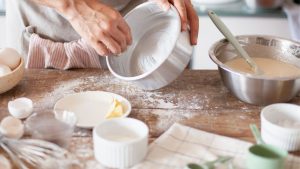
Types of Leavening Agents
Chemical Leaveners
- Baking Powder: Contains both an acid and a base. It works in two stages—once when mixed with liquid and again when exposed to heat. This makes it ideal for recipes where you need a consistent rise.
- Baking Soda: A base that requires an acid (like lemon juice or buttermilk) to react and produce carbon dioxide. It’s perfect for recipes with acidic ingredients.
Biological Leaveners
- Yeast: A living organism that ferments sugars and produces carbon dioxide and alcohol. Yeast is great for recipes that benefit from a longer rising time, like bread or certain cakes.
Physical Leaveners
- Air Incorporation: Achieved by creaming butter and sugar together or beating egg whites until stiff. This technique is often used to complement other leavening agents.
Tips for Using Leavening Agents
- Measure Accurately: Too much or too little leavening can drastically affect the outcome of your cake. Always use precise measurements.
- Check Freshness: Ensure that your baking powder and baking soda are fresh. Old leavening agents may not work effectively, resulting in a flat cake.
- Combine Wisely: Understand how different leavening agents interact. For instance, using baking soda with acidic ingredients can help achieve the desired rise.
== >> Check out the right cake Leavening tools and ingredients that you need here
Common Leavening Mistakes and How to Avoid Them
Leavening can make or break your cake. While it’s essential for creating that perfect rise and fluffy texture, there are common mistakes people make that can lead to dense or uneven results. Here’s a rundown of the most frequent leavening errors and tips on how to avoid them.
1. Using the Wrong Type of Leavening Agent
Mistake: Using baking powder instead of baking soda, or vice versa, can cause major issues in your cake. Baking powder and baking soda are not interchangeable; they have different properties and require different conditions to work.
Solution: Check your recipe carefully to see which leavening agent is recommended. Baking powder is typically used in recipes without additional acidic ingredients, while baking soda is used when there are acidic components like buttermilk or lemon juice. If you need to substitute, be aware of the differences and adjust accordingly.
2. Incorrect Measurements
Mistake: Too much or too little leavening agent can drastically affect the outcome. Using a heaping spoonful of baking powder when the recipe calls for a level one, or not measuring precisely, can lead to problems like excessive rising, collapse, or a flat cake.
Solution: Always measure your leavening agents accurately using the correct measuring spoons. For dry ingredients, use a spoon to lightly fill the measuring spoon and level it off with a straight edge.== >> Check out the right cake Leavening tools and ingredients that you need here
3. Expired Leavening Agents
Mistake: Using old or expired baking powder or baking soda can result in poor rising. These agents lose their effectiveness over time, which means they won’t produce the desired amount of gas.
Solution: Check the expiration dates on your leavening agents. To test if baking powder is still active, mix a small amount with water. It should fizz if it’s still good. For baking soda, add a few drops of vinegar or lemon juice if it bubbles, it’s still effective.
4. Inadequate Mixing
Mistake: Not properly mixing the leavening agents into the batter can result in uneven rising and inconsistent texture. If the leavening agents are not evenly distributed, some parts of the cake may rise more than others.
Solution: Ensure that you mix your dry leavening agents thoroughly with the other dry ingredients before combining with wet ingredients. This helps in even distribution. For baking soda or powder, make sure they are well combined with the flour or other dry ingredients before adding liquid.== >> Check out the right cake Leavening tools and ingredients that you need here
5. Overmixing the Batter
Mistake: Overmixing can lead to dense cakes. When you mix too much, you incorporate more air, which can cause the leavening agents to overreact and result in a cake that rises too quickly and then collapses.
Solution: Mix the batter just until the ingredients are combined. The batter should be smooth but still have a few lumps. Avoid beating excessively once the flour is added.
6. Incorrect Oven Temperature
Mistake: Baking at the wrong temperature can affect how the leavening agents work. Too high a temperature can cause the cake to rise too quickly and then collapse, while too low can lead to insufficient rise.
Solution: Preheat your oven to the temperature specified in your recipe and use an oven thermometer to ensure accuracy. Avoid opening the oven door frequently, as this can cause temperature fluctuations.
7. Not Following Recipe Instructions
Mistake: Deviating from the recipe, especially in terms of the leavening agent or the sequence of mixing, can lead to unexpected results. For instance, adding the leavening agent at the wrong stage of mixing can affect how it performs.
Solution: Follow the recipe instructions carefully. If the recipe specifies the order in which ingredients should be added or mixed, adhere to it closely for the best results.
Leavening Agents: Comparison Table
Here’s a quick comparison of the main leavening agents used in baking, highlighting their key characteristics and considerations:
| Leavening Agent | Type | How It Works | Common Uses | Key Considerations |
|---|---|---|---|---|
| Baking Powder | Chemical | Contains both an acid and a base; reacts with moisture and heat to release CO2 | Cakes, muffins, biscuits | – Use double-acting for recipes needing a rise in two stages.
– Check expiration date to ensure effectiveness. |
| Baking Soda | Chemical | Requires an acid (e.g., vinegar or lemon juice) to react and release CO2 | Cookies, quick breads | – Must be paired with an acidic ingredient.
– Acts immediately, so mix and bake promptly. |
| Yeast | Biological | Ferments sugars to produce CO2 and alcohol; requires time to rise | Bread, pizza dough, some cakes | – Needs time to rise; consider rising times.
– Sensitive to temperature; warm liquids activate it. |
| Air (Physical Leavening) | Physical | Incorporating air by creaming butter/sugar or beating eggs | Sponge cakes, chiffon cakes | – Incorporation method is crucial for texture.
– Usually used in combination with other leavening agents. |
Key Notes and Considerations
- Accuracy in Measurement: Accurate measurement of leavening agents is critical. Too much or too little can drastically affect the outcome of your baked goods.
- Freshness: Leavening agents, especially baking powder and baking soda, can lose effectiveness over time. Always check their expiration dates and test their potency if you’re unsure.
- Recipe-Specific Requirements: Different recipes call for different types of leavening agents. Always follow the recipe instructions carefully to ensure the right agent is used in the right amount.
- Mixing and Timing: For chemical leaveners, mixing and timing are key. For instance, baking soda and baking powder should be mixed evenly with dry ingredients to ensure uniform rising. Once combined with wet ingredients, the reaction starts immediately or in stages, so timely baking is crucial.
- Temperature Sensitivity: Yeast is sensitive to temperature. Using warm liquids helps activate yeast, while very hot or very cold liquids can inhibit its growth.
- Texture and Volume: The choice of leavening agent can impact the texture and volume of the baked good. For example, baking powder provides a consistent rise, while yeast adds flavor and a chewier texture due to its fermentation process.
Effects of Over-Leavening in Baking
Over-leavening can cause significant problems in your baked goods, affecting their texture, flavor, and overall quality. Here’s a breakdown of what happens when you use too much leavening agent and how to avoid these issues:
1. Excessive Rise and Collapse
What Happens: When too much leavening agent is used, it produces more gas than the batter or dough can support. This can cause the baked good to rise too quickly and then collapse in the middle as the structure fails to hold the excess gas.
Visual Indicators: The cake might have a dome-like top or large air pockets, and you may notice it sinking in the center after baking.
How to Avoid: Stick to the recipe’s recommended amount of leavening agent. If substituting or adjusting, do so cautiously and adjust other ingredients if necessary.== >> Check out the right cake Leavening tools and ingredients that you need here
2. Uneven Texture
What Happens: Excessive leavening can cause the batter to rise unevenly, resulting in a cake or bread with inconsistent texture. The structure may become too airy or full of large holes.
Visual Indicators: The baked good might have a spongy or porous texture with large irregular holes throughout.
How to Avoid: Mix the leavening agent thoroughly with the dry ingredients before adding liquid to ensure even distribution. Also, make sure to avoid overmixing the batter.
3. Bitter or Soapy Taste
What Happens: Too much baking soda or baking powder can lead to a bitter or soapy taste in your baked goods. This is due to the excess alkaline or acidic compounds that don’t fully react during baking.
Visual Indicators: The baked good may taste off or have an unpleasant aftertaste.
How to Avoid: Use the precise amount of leavening agent as specified in the recipe. Taste a small amount of the batter (if safe) to check for any off-flavors before baking.
4. Poor Crumb Structure
What Happens: Over-leavening can weaken the crumb structure of your baked goods, making them overly fragile or crumbly. The cake or bread may not hold together well and could fall apart easily.
Visual Indicators: The baked good might have a crumbly texture or fall apart when sliced.
How to Avoid: Ensure that you’re using the correct amount of leavening agent. Pay attention to mixing times and avoid overmixing, which can also negatively impact the crumb structure.== >> Check out the right cake Leavening tools and ingredients that you need here
5. Over-Browning
What Happens: Excessive leavening can cause the surface of your baked goods to brown too quickly. This can lead to a burnt or unevenly cooked exterior.
Visual Indicators: The edges or top of the cake or bread might be darker than the rest of the product, or have a burnt smell.
How to Avoid: If you suspect over-leavening, reduce the oven temperature slightly and monitor the baking closely. Use an oven thermometer to ensure that the baking temperature is accurate.
Leavening vs. Fermentation: Understanding the Differences
When it comes to baking and bread-making, two crucial processes are often discussed: leavening and fermentation. While they both involve the rise of dough or batter, they operate in different ways and have distinct roles in baking. Let’s break down these processes and their differences.
Leavening
Leavening refers to the process of incorporating gas into dough or batter to make it rise. This gas, usually carbon dioxide, expands during baking, causing the mixture to puff up and become light and airy. Leavening agents are substances that cause this gas to be released. There are three main types:
1. Chemical Leavening
How It Works: Chemical leavening agents like baking powder and baking soda react with moisture and/or acids in the batter to produce carbon dioxide gas.
Examples: Baking powder, baking soda.
Applications: Cakes, muffins, biscuits.
2. Biological Leavening
How It Works: Biological leavening involves living organisms, such as yeast, which ferment sugars and produce carbon dioxide and alcohol.== >> Check out the right cake Leavening tools and ingredients that you need here
Examples: Yeast.
Applications: Bread, pizza dough, some cakes.
3. Physical Leavening
How It Works: Physical leavening involves incorporating air into the batter through mechanical means, such as beating or creaming.
Examples: Beaten egg whites, creamed butter and sugar.
Applications: Sponge cakes, chiffon cakes.
Fermentation
Fermentation is a specific type of biological leavening. It is the process where microorganisms, primarily yeast, break down sugars into carbon dioxide and alcohol. This process not only causes dough to rise but also contributes to flavor development and texture.
How Fermentation Works
Yeast Activation: Yeast consumes sugars in the dough and produces carbon dioxide and ethanol.
Time Factor: Fermentation usually requires time for the yeast to grow and produce gas. This process can be influenced by factors like temperature, sugar content, and the type of yeast used.
Applications: Bread, certain pastries, and fermented dough products.== >> Check out the right cake Leavening tools and ingredients that you need here
Key Differences Between Leavening and Fermentation
| Aspect | Leavening | Fermentation |
|---|---|---|
| Definition | General process of incorporating gas into batter. | Specific process involving yeast breaking down sugars. |
| Agents | Chemical agents (baking powder, baking soda), physical methods (air incorporation). | Biological agents (yeast). |
| Gas Production | Gas is produced chemically or physically. | Gas is produced biologically by yeast. |
| Time Required | Immediate or short-term (depends on type). | Requires time for yeast to ferment and rise. |
| Applications | Cakes, cookies, muffins (quick leavening). | Bread, pizza dough (slow fermentation). |
| Flavor Impact | Generally minimal impact on flavor. | Significant impact on flavor due to fermentation. |
When to Use Each Process
- Leavening is suitable for quick breads and cakes where immediate rise is needed. It’s ideal for recipes that don’t involve long preparation times or extended rising periods.
- Fermentation is used for recipes requiring a more complex rise and flavor development, such as bread. This process is best for products where time allows for yeast to develop the dough’s texture and flavor.
FAQs on Leavening and Fermentation
Here are some common questions and answers about leavening and fermentation to help clarify any confusion and provide additional insights.
1. What is the primary difference between leavening and fermentation?
Answer: The primary difference is that leavening is a broad term referring to the process of making dough or batter rise using various methods (chemical, biological, or physical). Fermentation is a specific type of biological leavening where yeast breaks down sugars to produce carbon dioxide and alcohol, contributing to the rise and flavor of the dough.
2. Can baking powder be used in place of yeast?
Answer: No, baking powder and yeast are not interchangeable. Baking powder provides a quick rise through chemical reactions, while yeast requires time to ferment and produce gas. Yeast also contributes to flavor development, which baking powder does not.
3. How do I know if my baking powder or baking soda is still good?
Answer: To test baking powder, mix a small amount with water. It should fizz vigorously if it’s still active. For baking soda, add a few drops of vinegar or lemon juice. If it bubbles, it’s still effective. If either does not react, it’s time to replace them.
4. Can over-leavening be fixed if I realize the mistake before baking?
Answer: If you catch the over-leavening mistake before baking, you can adjust the recipe by adding more flour or other ingredients to balance out the excess leavening. However, once mixed and if baking has begun, it’s difficult to correct, so it’s best to follow the recipe closely from the start.
5. Why does my bread sometimes have a sour taste?
Answer: A sour taste in bread can be due to excessive fermentation, where the yeast has been allowed to ferment for too long, or due to the use of sourdough starters. It can also be caused by the presence of certain types of bacteria. If the taste is undesirable, adjust the fermentation time or check your starter’s health.
6. How can I ensure my cakes rise evenly?
Answer: To ensure even rising, mix the leavening agents thoroughly with the dry ingredients before combining with wet ingredients. Avoid overmixing the batter and ensure that your oven is preheated to the correct temperature. Use an oven thermometer to check for accuracy and bake in the center of the oven for consistent results.
7. What happens if I accidentally use too much yeast?
Answer: Using too much yeast can cause the dough to rise too quickly, which might lead to a collapsed structure. It can also result in an overly yeasty flavor and an irregular texture. If you realize the mistake early, you can adjust the dough by kneading in additional flour to balance the yeast.
Final Words
Understanding the roles of leavening and fermentation in baking can significantly improve your results, whether you’re making cakes, bread, or other baked goods. Leavening, whether chemical, biological, or physical, is essential for creating light and airy textures, while fermentation adds depth of flavor and a unique texture to yeast-leavened products.
By mastering these processes, avoiding common mistakes, and using the right leavening agents for your recipes, you can achieve consistently great results. Happy baking.

Hi!
I’m Mike, the creator of Forum Foodies. In my own personal experience, understanding ingredients is key to great cooking.
Forum Foodies offers guides on various ingredients, from staples to exotic finds. Join our community, share your experiences, and learn from fellow food lovers.
Have questions or suggestions? Email me at info@forumfoodies.com. Let’s embark on this delicious adventure together.
Happy cooking.
Mike/
Related Posts
- SCO: Scooping role in cake making Explained
In the world of cake making, every little detail matters. One technique that might seem…
- SLC - Slicing role in cake making Explained
When it comes to baking, the art of slicing can make or break the final…
- BRU: Bruising Role in Cake Making Explained
When it comes to baking, it’s easy to get caught up in the complexities of…
- TMP: Tempering Role in Cake Making Explained
In this topic, I’m going to talk about tempering, a technique that’s often overlooked but…
- BSH: Basting role in cake making Explained
In this topic, I'll talk about BSH basting and its role in cake making, sharing…
- FZ: Freezing role in cake making Explained
In this topic, I’m going to talk about the role of freezing in cake making,…
- FRY: Frying Role in Cake Making Explained
In this topic, I'm going to talk about a fascinating technique in cake making: frying.…
- GRD: Grating role in cake making Explained
When it comes to cake making, it's often the little details that make a big…
- DST: Dusting role in cake making Explained
In this topic, I’m going to talk about dusting and its crucial role in cake…
- SPN: Spoon role in cake making Explained
Hey there, cake lovers. In this topic, I'm going to talk about the humble spoon…
- PST: Pastry Role in Cake Making Explained
When it comes to baking, pastries are often thought of as their own special category,…
- SCR - Scoring Role in Cake Making Explained
When it comes to cake making, every detail matters, from the ingredients you use to…
- PSG - Pasting role in cake making Explained
In this topic, I’m going to talk about PSG (Pasting) and its crucial role in…
- BRT - Brushing role in cake making Explained
In this topic, I’m going to talk about the essential yet often overlooked technique of…
- STB - Stabilizing Role in Cake Making Explained
When diving into the world of cake making, you might come across the term "STB…

